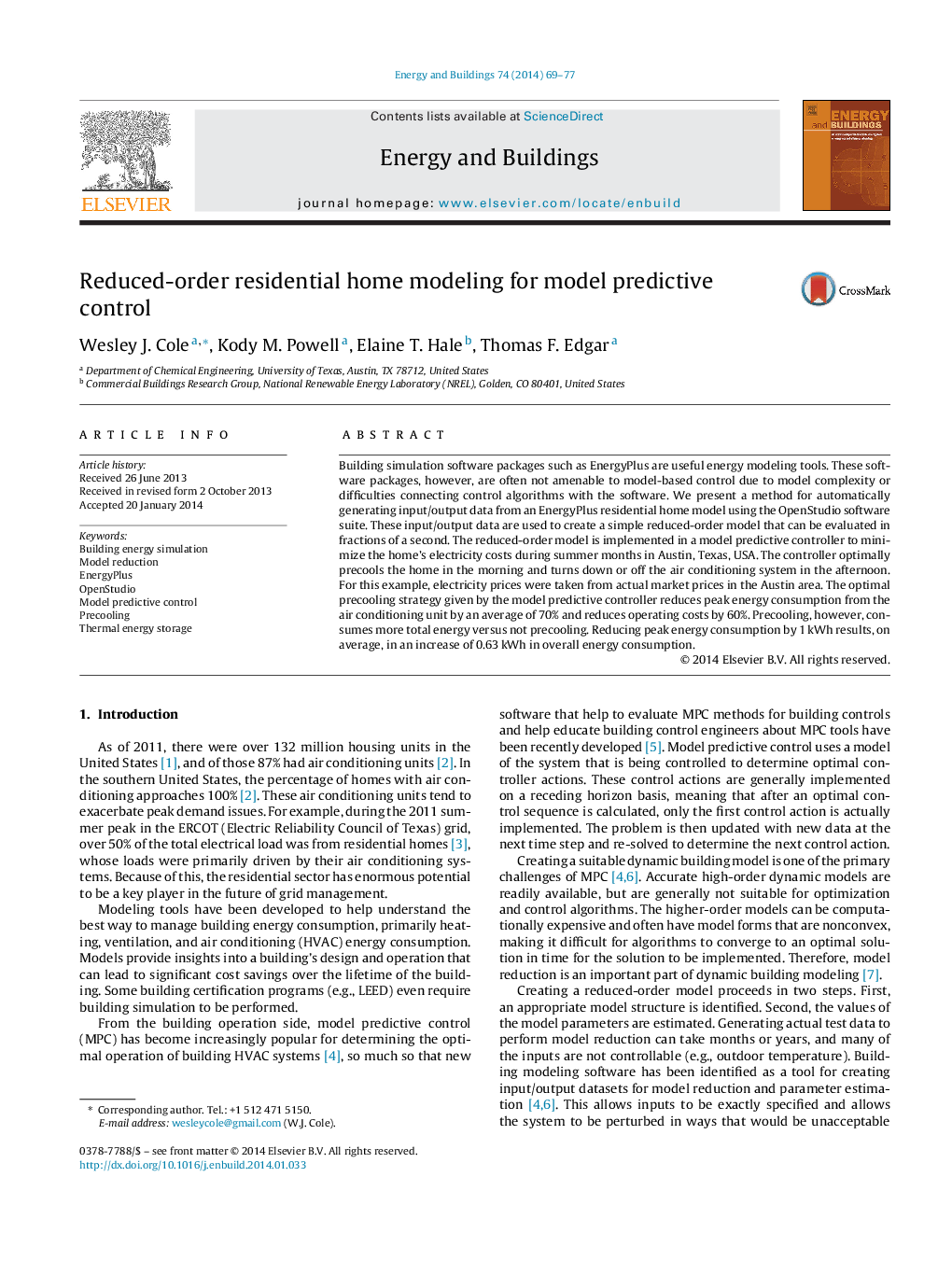| Article ID | Journal | Published Year | Pages | File Type |
|---|---|---|---|---|
| 262983 | Energy and Buildings | 2014 | 9 Pages |
•Automated process for developing reduced-order residential home models using OpenStudio.•Insight into design input sequences for residential home system identification.•Analysis of precooling for residential peak demand reduction using model predictive control.
Building simulation software packages such as EnergyPlus are useful energy modeling tools. These software packages, however, are often not amenable to model-based control due to model complexity or difficulties connecting control algorithms with the software. We present a method for automatically generating input/output data from an EnergyPlus residential home model using the OpenStudio software suite. These input/output data are used to create a simple reduced-order model that can be evaluated in fractions of a second. The reduced-order model is implemented in a model predictive controller to minimize the home's electricity costs during summer months in Austin, Texas, USA. The controller optimally precools the home in the morning and turns down or off the air conditioning system in the afternoon. For this example, electricity prices were taken from actual market prices in the Austin area. The optimal precooling strategy given by the model predictive controller reduces peak energy consumption from the air conditioning unit by an average of 70% and reduces operating costs by 60%. Precooling, however, consumes more total energy versus not precooling. Reducing peak energy consumption by 1 kWh results, on average, in an increase of 0.63 kWh in overall energy consumption.
